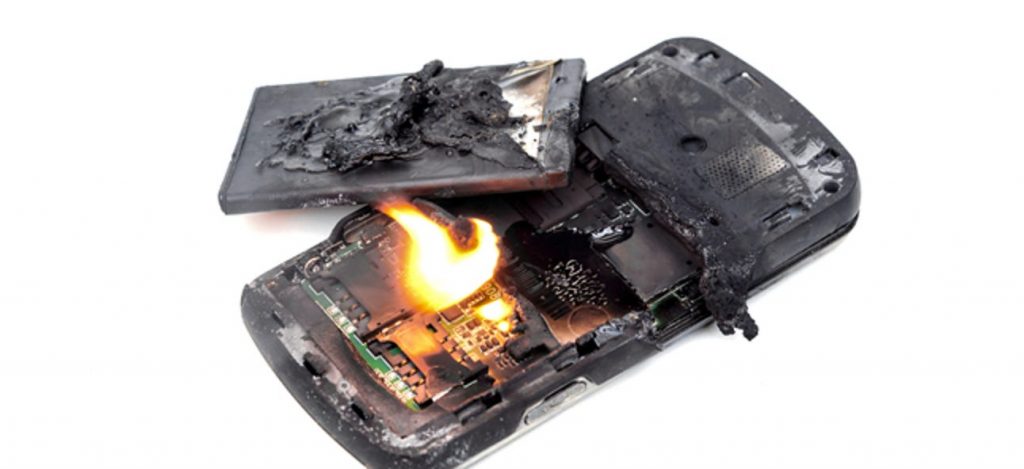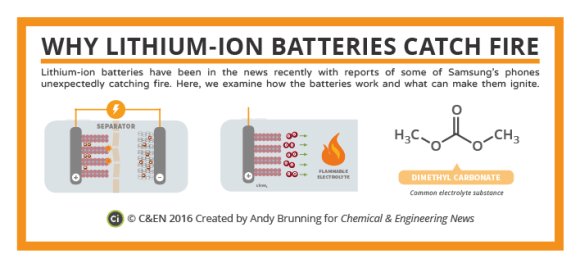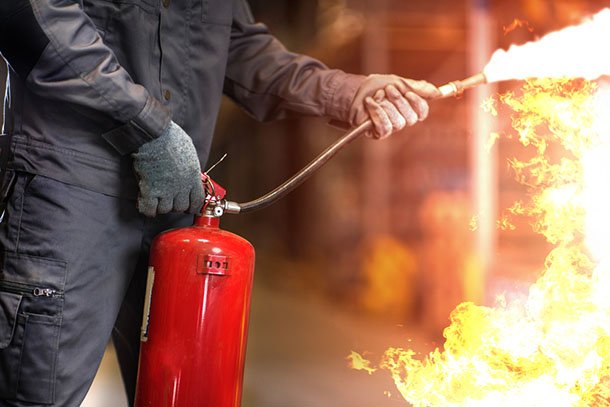
Lithium-ion batteries (or lithium-ion batteries) are considered safe to use, but with increasing use by millions of consumers and businesses, failures are bound to happen. Even years after the Samsung Galaxy 7 was recalled, the problem of exploding phones, e-cigarettes, and laptops hasn’t gone away. Only in the airline industry, the federal aviation administration (FAA) is reported 2006 to 2021 a total of 340 cases of incidents involving smoking or burning of lithium batteries.
Due to the increasing popularity of lithium-ion batteries, it is critical that businesses and employees who regularly use products and equipment powered by lithium-ion batteries understand the associated safety hazards and basic handling and storage guidelines to avoid workplace contamination of resources and injuries.
Let’s discuss what causes lithium battery fire, which fire extinguishers to use, and helpful lithium-ion battery safety tips to ensure your employees are prepared and able to prevent these fires from happening in the workplace.
Why do lithium-ion batteries catch fire
Should you worry about your phone or computer catching fire? Don’t worry; there is little possibility of this happening.
There are two basic types of lithium-ion battery failures. The first involves defects in the battery manufacturing process, and when defects are discovered, lithium-ion batteries are often recalled. For example, two different battery defects in the Samsung Galaxy Note7 smartphone led to two separate recalls and ultimately the permanent withdrawal of the model from the market.
The second type of battery failure is difficult to pinpoint. This is usually the result of a stressful event, such as vibration, an electrical short, or maybe just a fluke. As Battery University explains:
“A slight short circuit will only result in an elevated self-discharge, and since the discharge power is very low, the heat buildup is minimal. If enough tiny metal particles collect at one point, a considerable current can begin to flow through the battery’s electrodes. Heat buildup can also damage the insulation in the battery and cause an electrical short, as a small leak in a faulty dam can develop into a torrent and destroy the structure. Temperatures can quickly reach 500 °C (932 °F), at which point the battery can catch fire or explode des.”

How to put out a lithium battery fire
Despite the name, lithium-ion batteries used in consumer products do not contain any lithium metal. Therefore, Class D fire extinguishers cannot be used to extinguish lithium battery fires. Class D fire extinguishers contain dry powder and are only suitable for combustible metal fires. Since lithium-ion batteries are not made with metallic lithium, Class D dry powder fire extinguishers will not be effective.
So, how do you choose the right fire extinguisher in this situation? Lithium-ion batteries are considered a Class B fire, so standard ABC or dry powder fire extinguishers should be used. Class B is a classification for flammable liquids.
Lithium-ion battery safety tips for employees

Workplace injuries from lithium-ion batteries are preventable through ongoing employee education. Here are some lithium-ion battery safety tips to help businesses and their employees prevent workplace fires and injuries.
1. Always follow local, state, and federal regulations regarding proper battery disposal
2. Follow manufacturer’s guidelines when putting out fire Small battery catches fire
3. Use only batteries designed for the device
4. Use only the charging cable that came with the device
5. Keep the battery in its original packaging
6. Keep the battery at room temperature
7. Avoid placing the battery in direct sunlight or in high-temperature vehicles
8. Store the battery in a dry place with adequate ventilation
9. Store the device and battery in a fireproof container
10. Remove the battery from the charger after it is fully charged
11. Don’t charge your device under your pillow or on the couch
12. Purchase and use the equipment listed by a qualified testing laboratory
13. Replacement batteries and chargers should match and come from the original manufacturer or authorized dealer
14. Avoid uneven stacking of boxes with batteries as it may lead to tipping
15. Check for damage and battery before use. If defects are found, do not use and keep away from flammable materials
16. If the battery feels hot or damaged, remove the device immediately
Prevent Li-Ion Battery Fires and Keep Your Workplace Safe

As the incidence of lithium battery fire continues to increase, companies need to understand how to prevent and extinguish these fires to ensure the safety and operation of their workplaces. While it’s important to have safety procedures in place, businesses should work with an experienced fire company to ensure they have the right type of fire extinguisher to put out a 18650 fire quickly.

